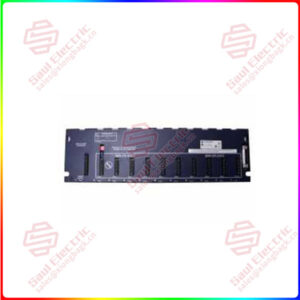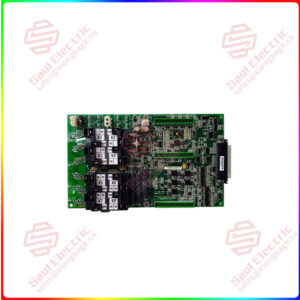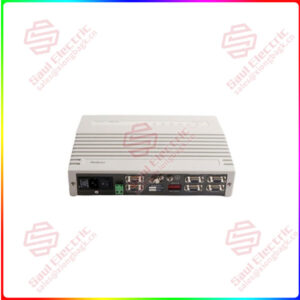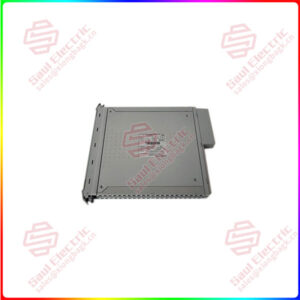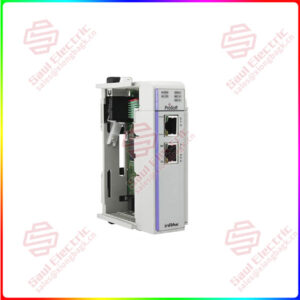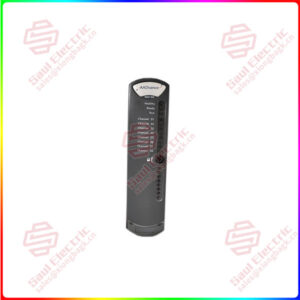Description
Overview
Essential details:MIVI1000E00HI00 protective relay GE
The relay protection device refers to an anti-accident automatic device installed on each component of the whole power system, which can respond quickly and accurately to various faults or abnormal operating states of electrical components in the specified area, and act within the specified time limit to make the circuit breaker trip or send a signal. Because the initial relay protection device is mainly composed of electromechanical relay, it is called relay protection device. Modern relay protection devices have developed into mainly composed of electronic components or microcomputers, but still use this name. The term relay protection generally refers to the relay protection technology or the relay protection system composed of various relay protection devices.
The basic tasks of the relay protection device are:
(1) Automatically, quickly and selectively remove faulty components from the power system, and ensure the normal operation of other trouble-free parts without being affected to the maximum extent.
(2) It can respond to the abnormal running state of electrical components, and send alarm signals according to the operation and maintenance specifications, or automatic load reduction, or delay tripping, so that the system operating personnel according to the types of alarms to take corresponding measures to deal with, avoid causing greater system failure.
(3) It can cooperate with other automatic devices in the power system, such as the automatic reclose device. When conditions permit, predetermined measures can be taken to restore the power supply and equipment operation as soon as possible, so as to improve the reliability of the power system operation.
To sum up, the relay protection is a kind of power system security technology, and the relay protection device is a kind of anti-accident automatic device of power system. During the normal operation of the power system, the relay protection device does not operate, but only closely monitors the running state of the power system and its components in real time. In case of failure or abnormal operation, the relay protection device will act quickly to realize fault isolation and send an alarm to ensure the safety of the power system. Therefore, the relay protection device is also visualized as the “protector god” of the power system. It plays an extremely important role in ensuring the safe operation of the system, ensuring the power quality, preventing the expansion of faults and accidents.
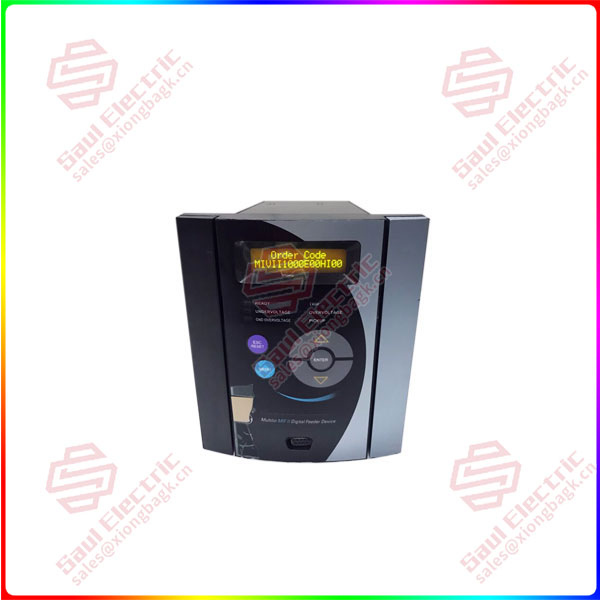
MIVII1000E00HI00
In order to make the relay protection device can complete the task of relay protection accurately and timely, the following four basic requirements should be met for the relay protection that technically operates on tripping.
1. reliability
The reliability of the relay protection device refers to that when there is a fault that the relay protection device should act within the specified protection range, it should not refuse to act (also known as reliability), and in any other case that it should not act, there will be no wrong action (also known as safety).
The misoperation and rejection of the relay protection device will cause serious harm to the power system. However, the measures to improve the reliability of non-error operation and non-rejection operation are often contradictory. Because of the different structure and load nature of power system, the harm degree of misoperation and rejection is different, so the emphasis of improving the reliability of protection devices should be different in various specific situations. For example, when the system has sufficient rotating standby generation capacity, many transmission lines, and close connections between systems and between power sources and loads, the loss to the power system may be small due to the removal of generators, transformers or transmission lines by the misoperation of the relay protection device, but if the relay protection device refuses to operate when the generator, transformer or transmission line fails, the loss may be small. It will cause damage to equipment or damage to the stability of the system, the loss is huge. In this case, it is more important to improve the reliability of relay protection not to be tripped than to improve the reliability of relay protection not to be tripped. When the rotating standby power generation capacity in the system is small, and the connection between the system and the power supply and load is weak, the generator, transformer or transmission line will be cut out because of the wrong action of the relay protection device, it will cause the interruption of the load power supply, and even cause the damage of the system stability, the loss is huge, and when the relay protection device is rejected, Its backup protection can still operate, remove the fault, therefore, in this case, to improve the reliability of the relay protection device is more important than to improve the reliability of the relay protection device. It can be seen that appropriate measures should be taken to improve the reliability of the relay protection device according to the specific situation of the power system and load.
2. sensitivity
The sensitivity of a relay protection device refers to its ability to respond to faults or normal operating conditions within its protection range. The relay protection device that meets the sensitivity requirement should be able to detect the fault and respond correctly when the fault occurs within the specified protection range, regardless of the location of the short circuit point, the type of short circuit, and whether the short circuit point has a transition resistance. The sensitivity of the relay protection device is usually measured by the sensitivity coefficient, which is mainly determined by the parameters and operation mode of the protected component and power system. GB/T 14285-2006 “Technical Regulations for Relay Protection and safety automatic devices” has made specific provisions on the minimum sensitivity coefficient of various relay protection devices.
3. selectivity
The selectivity of the action of the relay protection device means that the fault element is only removed from the power system when it is operated, so as to reduce the fault scope as far as possible, so as to ensure that the trouble-free part of the system can continue to operate safely.
4. rapidness
The rapidity of the relay protection device refers to its ability to remove faults as quickly as possible. Rapid fault removal can improve the stability of concurrent operation of power system, reduce the user’s working time under the condition of voltage reduction, and reduce the degree of failure of fault components. Therefore, in the event of failure, should strive to relay protection device can act quickly.
lf you need to inquire or purchase ,please send the product models to my email or call medirectly .
Sales Manager: Manager He
E-mail number: sales@saulcontrol.com
skype/ wechat: +86-18059884797
Mobile phone/wechat: +86-18059884797
QQ:3095989363

My company under the Sales and Marketing Department, technical engineering Department, after-sales service department, the department of comprehensive management. We can help your business with good service.
1. Sales Department 24/7 service. Handles your requests for any PLC DCS products in a timely manner with patience and professionalism.
2. The engineering department ensures that the products have no quality problems. All products will be inspected before shipping.
3. The financial department checks the payment and refund in time.
4. The warehouse department will carefully check the list of goods, carefully pack them, and deliver the goods in time.
5. After-sales Service Department has a full-time after-sales service team, subordinate to the sales department, and users can timely respond to service requests.

Shipping
Superiority products MIVI1000E00HI00 protective relay GE
| ABB LXN1604-6 | HIMA HIMA 4135A | BENTLY 3500/22M 138607-01 |
| TEWS TPMC815-11 | Reliance 61C350 | BENTLY 3500/22M 288055-01 |
| TRICONEX 4351B | SAMS0N 45-4 | BENTLY 2300/25-00 |
| ENTERASYS A4H254-8F8T | EMERSON 38B5786X092 | KEBA CP450/C |
| BENTLY 3500/15 106M1079-01 | ENTERASYS A4H124-24TX P0973JM | ABB PM803F 3BDH000530R1 |
| ABB UNITROL 1020 UNS0119A-Z,V1 3BHE030579R0003 | SCHUMACHER ATCS-15 1464-0320 | PROSOFT MVI56-PDPMV1 |
| B&R 5AP920.1505-01 | FOXBORO FBM230 P0926GU | Eaton MTL831C |
| ABB UNITROL 1020 | GE F650-N-F-L-F-2-G-1-HI-P-6E | BENTLY 3500/22M |
| GE IS215UCVEM09B | Sartorius MDB-8E | BENTLY 3500/33 |
| EPRO PR9268/601-000 | EMERSON 1C31203G01 | Fireye 48PT2-1007 |
| ABB V17152-310 | A-B 1756-RM/A | SECURITY COMPANY BLL510 |
| ABB AO2000-LS25 | A-B 1756-L63/B | GE IC754VGF12CTD |
| DANAHER S20660-SRS | A-B 1756-CN2R/B | ADEPT 10350-00104 |
| HIMA F7126 | A-B 1756-EN2T/B | ABB PHARPS32000000 |
| HIMA F7131 | A-B 1756-PA72/C | HONEYWELL CC-TDIL61 |


 1 Year Warranty
1 Year Warranty
